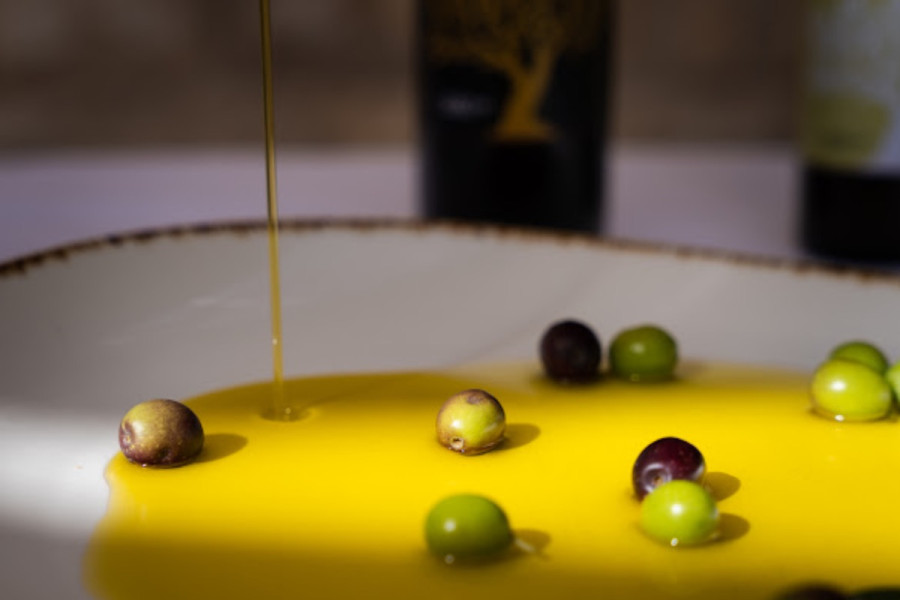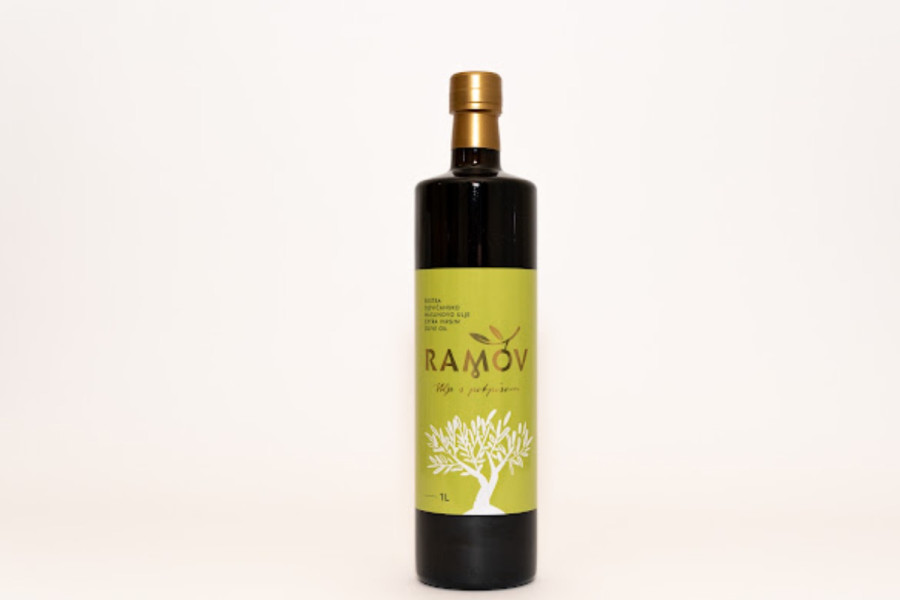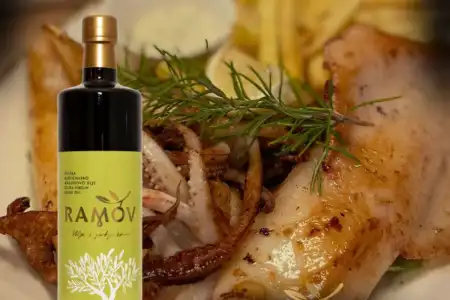They call it liquid gold, and not without reason. Thanks to oleic acid and polyphenols, olive oil reduces inflammation in our body and supports the health of the heart and blood vessels. Its mild spiciness enhances the flavor of every dish, from fresh salads to cooked and baked delicacies. Beyond the palate, olive oil also nourishes our skin. Extra virgin olive oil, created from olives grown in pure nature, is a true treasure. But how best to use it, and how often, to gain its maximum effect and enjoyment? How to use olive oil in the kitchen and beyond, and how it benefits our body, is explained by nutritionist Valerija Fabijanić.
How and How Often to Use Olive Oil?

They call it liquid gold, and not without reason.
Thanks to oleic acid and polyphenols, olive oil reduces inflammation in our body and supports the health of the heart and blood vessels.
Its mild spiciness enhances the flavor of every dish, from fresh salads to cooked and baked delicacies. Beyond the palate, olive oil also nourishes our skin.
Extra virgin olive oil, created from olives grown in pure nature, is a true treasure.
But how best to use it, and how often, to gain its maximum effect and enjoyment?
How to use olive oil in the kitchen and beyond, and how it benefits our body, is explained by nutritionist Valerija Fabijanić.
Can We Use Olive Oil for Cooking and Baking?
One of the most common myths about olive oil is that it isn’t stable or safe enough for cooking or baking.
Why? Because oils that contain a high proportion of polyunsaturated fatty acids are not suitable for heat treatment – the oil oxidizes and byproducts are formed.
But with olive oil, the situation is different, because it is dominated by monounsaturated oleic acid. This is much more stable than polyunsaturated fats, explains Valerija Fabijanić.
In addition, certain antioxidants in olive oil increase its stability at high temperatures.
“The smoke point of olive oil is about 190–210 degrees Celsius, which is sufficient for most cooking methods,” says the nutritionist.
So, extra virgin olive oil is safe for cooking, baking, and frying.
To Fry or Not to Fry with Olive Oil?
Let’s be honest - frying is not the healthiest way to prepare food, no matter which oil you use.
“Preference should be given to stewing, steaming, and baking, and deep frying should be reduced to the lowest possible level,” advises the nutritionist. If we do fry, we can do it with olive oil. What’s important is that the oil should not be reused after frying. This is because frying can create a number of byproducts that are not beneficial to our health.
How Does Olive Oil Affect Our Health?
We’ve learned that olive oil supports our cardiovascular system and reduces inflammation in the body.
We asked nutritionist Valerija Fabijanić to share what science actually says about olive oil and health.
“If we prioritize it over saturated fatty acids, we will reduce the risk of heart attack and other cardiovascular diseases. It’s also extremely useful for people who struggle with systemic inflammation (for example, arthritis, insulin resistance, inflammatory bowel diseases). Olive oil can help lower the level of inflammatory cytokines.”
The strong properties of olive oil are largely due to polyphenols, which we recognize in taste as a slightly bitter or pungent note. For our body, these natural plant compounds are extremely important.
“Polyphenols act as antioxidants and anti-inflammatory agents. In olive oil, we find the highest levels in fresh, properly stored extra virgin olive oil,” says Fabijanić. The factor that greatly affects polyphenol levels in oil is its age.
“Polyphenols are sensitive to oxidation, light, air, and heat. Even with top-quality oil, if it is stored too long, especially in warm or bright places, their levels drop drastically. That’s why it’s important to choose fresh oils with a longer shelf life,” the nutritionist notes.
How Much Olive Oil Do We Need to Feel Its Benefits?
How often and in what amounts should we consume olive oil to feel its benefits?
Valerija Fabijanić explains that there are no precisely defined scientific quantities for beneficial consumption.
Still, it’s recommended to use olive oil regularly and in moderation in your daily diet. For example, 1–2 teaspoons in a salad, 1 teaspoon for cooking, and 1–2 teaspoons drizzled over vegetables or fish.
“One to two tablespoons daily can be part of a healthy diet. As with everything, moderation is key, so use a teaspoon or tablespoon for adding oil,” says the nutritionist. Although healthy, olive oil is also high in calories, so you don’t want to overconsume and exceed your energy needs.
Olive Oil and Skin Care
Olive oil nourishes our body from the inside, but also from the outside. It hydrates and conditions the skin and is a common ingredient in cosmetics. Some use it to remove makeup, while others use it during the summer months for a better tan.
In skin care, olive oil mixed with sand was used by the Romans, particularly gladiators. They would scrape off the mixture of sweat, oil, and sand with a tool (strigil), which served as a kind of peeling. Less known is that the Romans bottled this mixture and sold it to admirers, both women and men, who considered it an aphrodisiac..jpeg)
From a nutritional perspective, olive oil is also a functional substance for the skin, says Fabijanić.
“The same bioactive compounds that act anti-inflammatory and antioxidative inside the body can also have protective and regenerative effects on the skin. Still, one should be mindful of individual skin reactions and use it in appropriate amounts. It can be used, for example, for massages or nail and cuticle care.”
Practical Tips and Tricks for Buying and Using Olive Oil
When choosing olive oil, make sure you buy extra virgin, not just “olive oil” or “virgin olive oil.”
How can you be sure an oil labeled “extra virgin” really is extra virgin? Green color is not necessarily a sign of quality, but the taste can be a much better measure.
“If the oil is completely mild, odorless, or rancid, it’s probably not real extra virgin olive oil. Real oil has a slight bitterness and spiciness, which indicates beneficial anti-inflammatory compounds,” explains the owner of the nutrition consulting business Taste of Health.
“Also, the method of extraction must be ‘cold-pressed,’ because this way the oil retains the most nutrients. Avoid buying oil in plastic or clear glass bottles,” emphasizes Fabijanić. Quality oil is stored in dark glass bottles, just like our Ramov oil.
“My advice is to buy from small local producers who can always give you information about the harvest and production methods,” says Valerija Fabijanić.
Ramov – oil with a signature is one such small family producer. Our olives come from the Telašćica Nature Park on Dugi Otok and the green Ravni Kotari near Zadar. We process them in our own mill, meaning we control the entire production process.
The oil we produce is extra virgin, with a recognizable mildly spicy and fruity taste. For gourmets and those who love to explore flavor variations, each year we also create single-varietal oils aka monovarietal olive oil.
Now that you know everything about the benefits of olive oil, it’s time to try real “liquid gold” from Dalmatia! Discover the range of Ramov oils and experience the perfect blend of tradition, passion, and the juiciest flavors of Dalmatian olives for your health and gourmet pleasure. Your palate and body will thank you!






